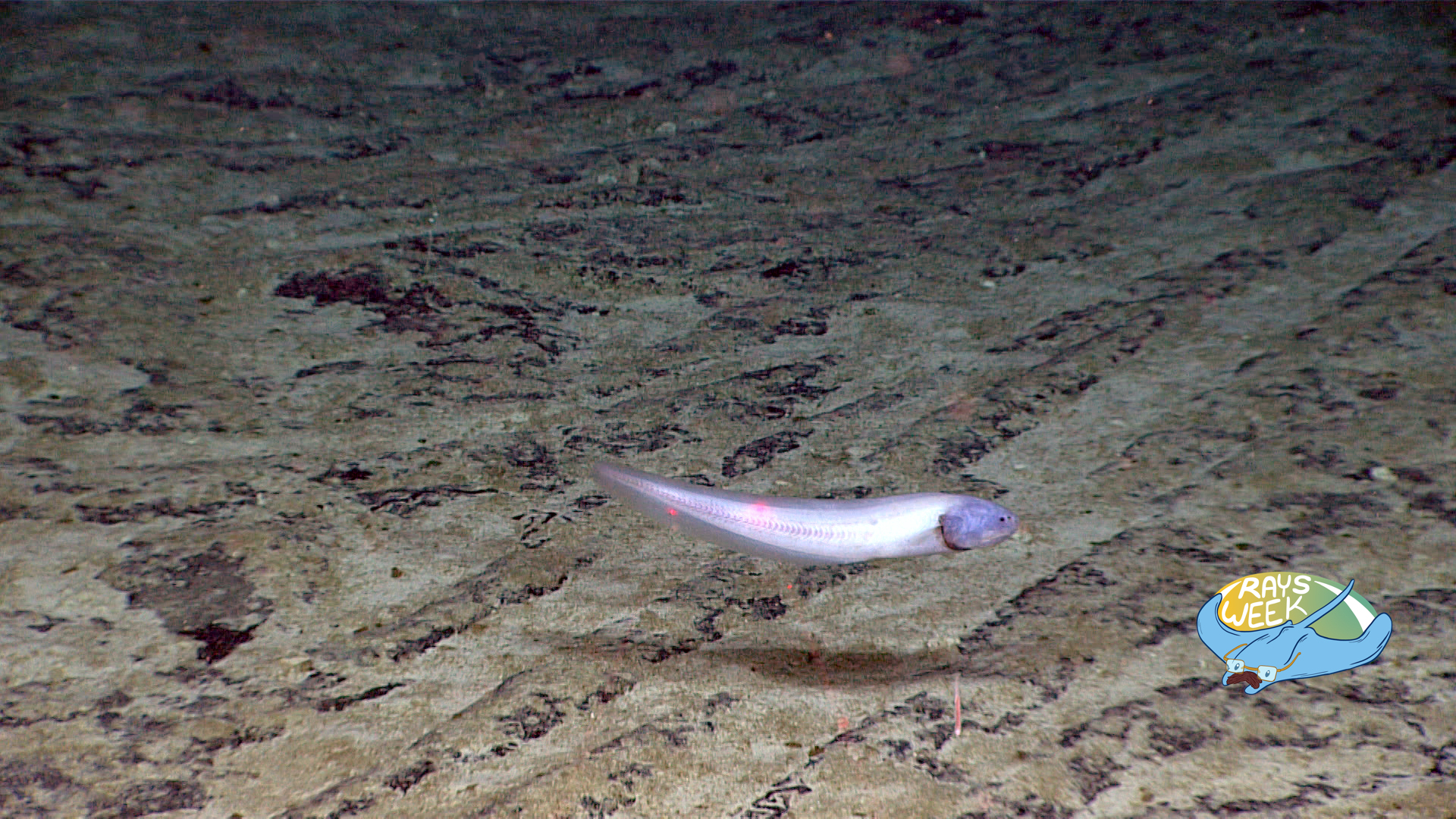Soon after NASA's reveal of the deepest, sharpest, and awe-inspiring look of the distant galaxies, a research center in Australia revealed a similarly awe-inspiring photo of a deep-sea fish. Galaxy cluster SMAC 0723, please meet the robust assfish. It's a big week for you both.
This photo of the robust assfish was shared by the Deep Sea Research Centre, a multidisciplinary team run by the University of Western Australia and the Minderoo Foundation. It is not the first photo of a robust assfish ever taken, nor the sharpest, but every photo of a robust assfish is special and to be treasured. The robust assfish is a reminder that there is wonder everywhere; you need only look.
The Bassozetus robustus is a species of ray-finned fish in the cusk-eel family. Ray-finned fish, named ever-so-aptly for the bony rays in their fins, differ from lobe-finned fish, which have fleshy fins. Ray-finned fish comprise nearly half of all vertebrate species, and live just about everywhere: in rivers, lakes, and oceans, ephemeral pools, desert springs, subterranean caves, polar seas, and the dark depths of the ocean. Sunfish, oarfish, blobfish, toadfish, clownfish, anglerfish, lumpsuckers, electric eels, barreleyes, stargazers, humphead wrasses, and assfishes are all ray-finned fishes. If you have ever known a bony fish or loved a bony fish, there is a good chance it was a ray-finned fish. Hooray!
Although B. robustus may be the most robust assfish, taxonomically speaking, it is not the only assfish. There are several other assfishes. The most famous is probably the bony-eared assfish Acanthonus armatus, which was heralded in a 1987 study for having an extremely tiny brain. There is the Galathea assfish Bassozetus galatheae, the Glutin assfish Bassozetus glutinosus, the Cavernous assfish Porogadus gracilis, and the abyssal assfish Bassozetus compressus, which do not appear to be famous for anything in particular beyond bearing the noble name of assfish.
Why are these fishes are called assfishes? No one is sure, but a possible explanation comes from the bony-eared assfish's scientific name. According to an etymological dissection of Acanthonus armatus in National Geographic, Armatus translates to "armed" in Latin, Akanthos is Greek for "prickly" and onus could mean a type of cod ... or a donkey, also known as the land ass. If this explanation is not convincing enough, sorry! It is the only one we have.
This particular robust assfish was photographed in the Puerto Rico Trench, the deepest part of the Atlantic Ocean and the Caribbean Sea, which reaches more than five miles undersea.
What else do we know about the robust assfish? I know that the billionaire Victor Vescovo very generously called them the "'wolves' of the ultra-deeps." What makes a fish a wolf, you ask? Perhaps the same thing that makes Ronny Cammareri a wolf without a foot and Loretta Castorini a bride without a head. And, quite possibly, the robust assfish implies the existence of a frail assfish. Scientists need only find it.

